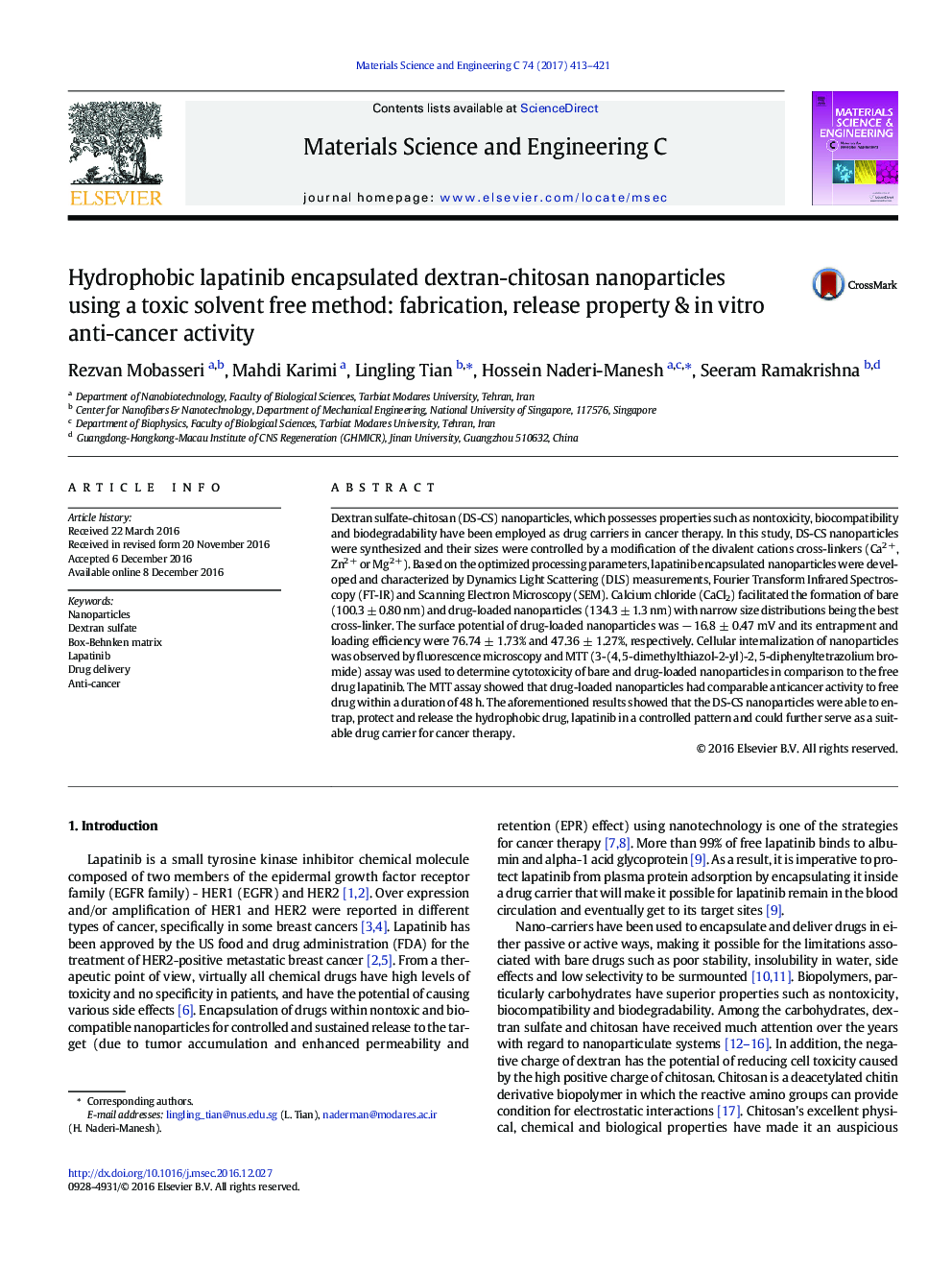| کد مقاله | کد نشریه | سال انتشار | مقاله انگلیسی | نسخه تمام متن |
|---|---|---|---|---|
| 5435043 | 1509147 | 2017 | 9 صفحه PDF | دانلود رایگان |

- The best condition to prepare best size (about 100 nm) dextran-chitosan nanoparticles is proposed.
- Divalent cationic cross-linker can act as hardener and compress the particles.
- Drug/dextran mixing in a toxic solvent free method provides hydrophobic drug encapsulation within a hydrophilic system.
- High entrapment efficiency of Lapatinib in polymeric nanoparticles can be achieved by tuning polymer/drug ratio.
Dextran sulfate-chitosan (DS-CS) nanoparticles, which possesses properties such as nontoxicity, biocompatibility and biodegradability have been employed as drug carriers in cancer therapy. In this study, DS-CS nanoparticles were synthesized and their sizes were controlled by a modification of the divalent cations cross-linkers (Ca2 +, Zn2 + or Mg2 +). Based on the optimized processing parameters, lapatinib encapsulated nanoparticles were developed and characterized by Dynamics Light Scattering (DLS) measurements, Fourier Transform Infrared Spectroscopy (FT-IR) and Scanning Electron Microscopy (SEM). Calcium chloride (CaCl2) facilitated the formation of bare (100.3 ± 0.80 nm) and drug-loaded nanoparticles (134.3 ± 1.3 nm) with narrow size distributions being the best cross-linker. The surface potential of drug-loaded nanoparticles was â 16.8 ± 0.47 mV and its entrapment and loading efficiency were 76.74 ± 1.73% and 47.36 ± 1.27%, respectively. Cellular internalization of nanoparticles was observed by fluorescence microscopy and MTT (3-(4, 5-dimethylthiazol-2-yl)-2, 5-diphenyltetrazolium bromide) assay was used to determine cytotoxicity of bare and drug-loaded nanoparticles in comparison to the free drug lapatinib. The MTT assay showed that drug-loaded nanoparticles had comparable anticancer activity to free drug within a duration of 48 h. The aforementioned results showed that the DS-CS nanoparticles were able to entrap, protect and release the hydrophobic drug, lapatinib in a controlled pattern and could further serve as a suitable drug carrier for cancer therapy.
184
Journal: Materials Science and Engineering: C - Volume 74, 1 May 2017, Pages 413-421